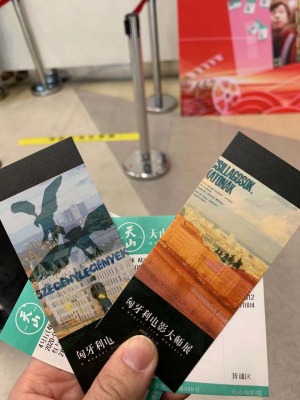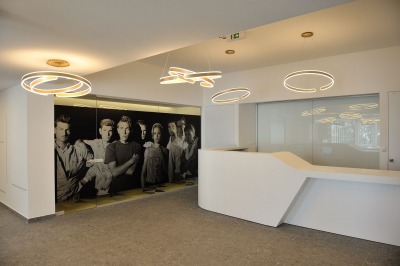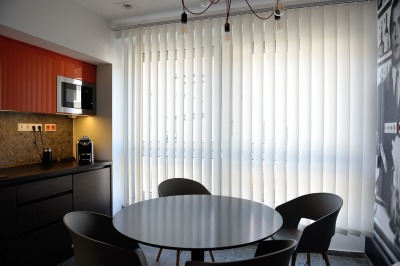The Hungarian film archive was established in 1957 as the Színház- és Filmtudományi Intézet (Institute of Theatre and Film Science). Ever since that date – under various names, locations, concepts and funding bodies – it has gone about the work of protecting and making accessible the film heritage of Hungary.
Background up until 1957
1957-1989 Foundation to change of regime
1990-2011 Public collection
2012-2016 MaNDA era
From 2017 to today Part of the Film Fund/Film Institute
Directors and name variations
The fact that for centuries the national culture in Hungary was literature-centric meant that there was no particular urgency in the institutionalized collection of our national visual heritage. When the Hungarian film archive was established in 1957, a full 56 years had elapsed since the birth of the very first Hungarian film, A táncz, in 1901. In the course of succeeding decades and the various historical-social cataclysms, 90% of silent films and 40% of pre-war sound films were destroyed. This meant that the product of more than half a century of filmmaking had to be collected retrospectively from 1957. Right from the start, there were ideas about the preservation of movies as being of documentary value. The concepts, however, preferred documentary-type recordings, and for quite a long time no consideration was given to feature films produced with an artistic purpose.
1908 Mozgófénykép Híradó (Moving Pictures Newsreel) – In one of the earliest editions of the journal there is a warning: “recordings that are of historical relevance must be carefully preserved for posterity because nothing can guarantee historical authenticity better than the movies.”
1912 Sándor Nagy, teacher at Wesselényi College – “The museum should definitely be established in a place where a moral guarantee is given that they will work there with an understanding of the set goal and with their entire will; where an appropriate space is made available for film, equipped with all the necessary apparatuses essential for this objective. We know that the preservation of films is no easy thing. This is why care has to be given to their management. This can be properly carried out only by competent experts. Given all this, it is only possible to entrust this to the management of an already existing cultural institution, which would provide a guarantee from that aspect as well, that films deposited there would not be used for commercial gain. Film producers would willingly deposit their films in such an institute guaranteeing all these conditions. The reason for depositing is that, as is well known, a film represents a huge value, and the renunciation of proprietary rights (even to a museum) would be a huge sacrifice, but it is not necessary from the aspect of the objective.”
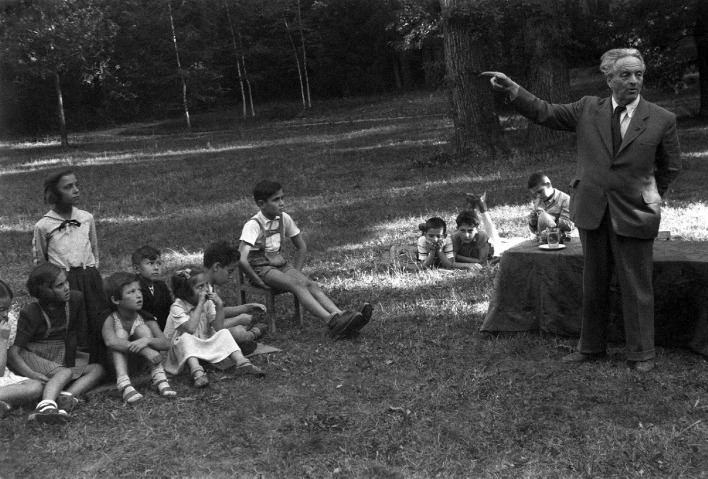
Béla Balázs speaking to children from the Rákosi Mátyás Children’s Home on Szabadság Hill. MAFIRT recording, 1945 (source: Photo MTI )
1931 Béla Balázs – “As regards silent films, we were almost too late in our establishment of the archive. There is no way to explain what has already been lost. However, the selection of sound films from specific aspects is still resolvable. This collection, continuously being added to, must opportunely reflect the current state of development. These must be precisely recorded as it is done in a library, according to those areas in which they reveal a particular characteristic. The catalogue – by giving a precise description and appreciation of performance – should provide the visitor with the opportunity to immediately find what he/she is particularly interested in.”

István Szőts (photo: Sándor Mohi, source: MNFA)
1945 István Szőts – “A filmtheque is absolutely essential, where films from silent movies to the very latest creations are available and can be screened. It would be easy to stock a film library and periodical collection because, unfortunately, all the literature on film would fill just a few shelves...”
1946 Béla Balázs takes practical steps to initiate the establishment of the Institute of Film Science. Some of “the most important tasks include the foundation and expansion of a filmtheque (collection of old films) – as well as exchange relations with the filmtheques of institutes of film science in other countries.” The institute begins to take shape within the framework of the Színház- és Filmművészeti Főiskola (College of Theatre and Film Art) but progress is halted following the death of Béla Balázs in 1949.

Béla Balázs (second right) at the session of the Institute of Film Science he established. The poster behind him reads: “It is difficult to reconcile learning with organization. But since when have we been afraid of difficulties?” (Stalin) (MAFIRT photo: Ferenc Bartal, 1949, MTI Fotó)
In 1949, the Ministry of People’s Education asked Andor Lajta, pioneer of research into Hungarian film history, to organize the film archive. At that time, he was the only person with real expertise in this area. Lajta established a collection called the Magyar Állami Filmarchívum (Hungarian State Film Archive) on the Pasaréti Road premises of Hunnia Film Factory. Here, archived films were kept in primitively equipped storerooms complying with virtually no fire safety regulations: in winter, the films shrunk due to the intense cold, and in summer they expanded in the heat. Prints were often cut up and negatives disappeared. Even given these conditions, in three years Andor Lajta succeeded in archiving and processing 800,000 metres of film in 4000 boxes. In late 1949, Lajta and his archive staff were unexpectedly transferred to the Könyves Kálmán Road premises of Magyar Film Iroda (Hungarian Film Office) (from 1949, Magyar Híradó és Dokumentumfilmgyár – Hungarian Newsreel and Documentary Film Factory). In the early 1950s, the MAFILM Archív Osztálya (MAFILM Archive Department), predecessor of the Film Archive and still under the direction of Andor Lajta, was established with the integration of the Pasaréti Road collection and the Könyves Kálmán Road premises.
“The situation Hungary found itself in after 1914 is in large part the reason that we couldn’t realize this institute for 40-50 years. Plans and resolve were fatally hampered by the restless and turbulent conditions coming out of World War I, and the Trianon peace treaty, furthermore, the social and economic crisis. And just when it appeared that the long-awaited plans would finally be achieved, every curse, every bestiality of Hitlerism was visited on us. The first months, indeed years, of the liberation from fascism still did not fulfil the desired hopes. Immediately after the fighting, what little that remained at the end of the war was taken apart, not to speak of the terrible disaster caused to Hungarian film with the blowing up of the Budafok film storeroom. Tens of thousands of still surviving film prints were sold abroad by the wagon load, or were despatched to the scrap film processing works. Inconceivable thefts, smuggling and planned destruction followed one after the other.” (Reminiscences of Andor Lajta, 1953)
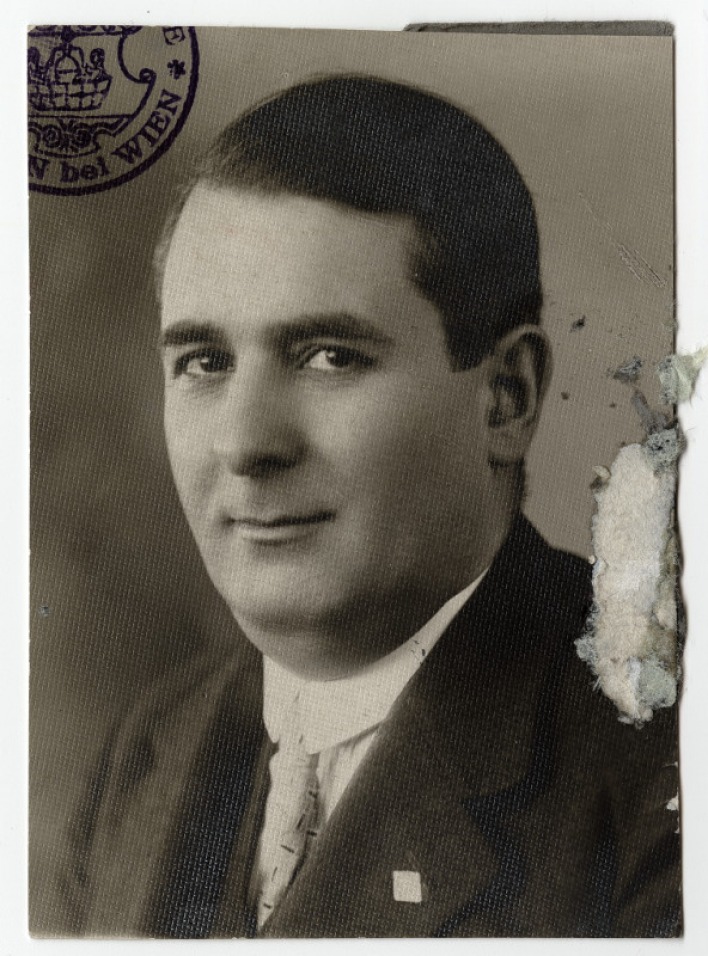
Andor Lajta (source: MNFA)
Born in Vienna (22 April 1891), Andor Lajta began his journalistic career in Szombathely, at Vasvármegye. He was enlisted at the outbreak of World War I but shortly after this discharged due to illness. This is when his first articles on films were published (Mozi Világ), and 1919 saw the very first edition of Film Annual that he edited. It was a unique undertaking in Hungarian film life and film history, being published annually right up to 1949. In 1928, he founded the specialist journal Filmkultúra, that was banned by the Imrédy government ten years later. In October 1944, the fascists arrested him, sending him first to Isaszeg and then the Óbuda brick factory; one of his friends who worked at the Portuguese embassy saved him from certain death. After the liberation, he devoted all his energy to creating a Hungarian film archive, and operating it to high standards. He published two books: The Decade-Old Hungarian Sound Films (1942) and History of the 50-Year-Old Film (1946). His 800-page opus on the history of Hungarian film remains unpublished to this day. He died from a heart attack on 21 March 1962. (Vince Zalán: Andor Lajta, Filmvilág 1981/4.)
In the middle of the 1950s, the film profession globally underwent important technical transformations. The media of filmstrip switched from nitrate film that is highly explosive and flammable to so-called ‘safety film’, a non-flammable plastic. Storage and handling of the new film material is easier and quicker, and does not endanger cinema audiences and film storerooms. Around this time, the question of establishing national film archives was raised again all over the world. The other motivating factor was the appearance in Hungary of television, a competitor to film. It became evident that a film storage centre would be required to satisfy the incessant demands of television, from where even several TV channels could be fed.
The Institute of Theatre and Film Science was established In January 1957. Its first head was theatrical director Ferenc Hont, researcher of drama theory. Thanks to his organizational abilities and contacts, the film institute was set up within the frame of the existing theatrical institute. The new institute immediately became a member of the International Federation of Film Archives (FIAF).
Hungarian members of the FIAF Executive Committee:
| NAME | MEMBERSHIP | YEAR |
| György Ráduly | member | 2021 |
| György Ráduly | member | 2019 |
| Vera Gyürey | vice-president | 2001 |
| Vera Gyürey | vice-president | 1999 |
| István Molnár | member suppléant | 1978 |
| István Molnár | member | 1977 |
| István Molnár | member | 1976 |
| István Molnár | member suppléant | 1975 |
| István Molnár | member suppléant | 1974 |
| István Molnár | member suppléant | 1972 |
| Yvette Bíró | member suppléant | 1963 |
| Yvette Bíró | member suppléant | 1962 |
| Ferenc Hont | member | 1958 |
| Ferenc Hont | member | 1957 |
Source: https://www.fiafnet.org/pages/History/Past-Executive-Committees.html

Ferenc Hont (source: MNFA)
The institute was launched in extremely poor circumstances. The country faced enormous economic and political challenges, which allowed only minimal attention to be given to such a cultural centre, and its financial resources were practically zero. The new institute had to organize virtually everything: the archive, the educational programmes, book publishing, scientific activity. It had no skilled staff, and it made up for deficiencies in knowledge with the help of the slowly growing filmtheque and specialist library. There was no Hungarian language access to either Hungarian or universal film history. Absolutely no film-related scientific activity was conducted. Neither film education, nor teaching or science work had its own experts, because they had no opportunities to gain a thorough knowledge of films of universal film history, or of film history itself.
The new institute took under its wing the Hungarian State Film Archive established by Andor Lajta on the premises of the Pasarét film factory as well as Hungarian film stock scattered in five different locations. Occasionally, it actually rescued this stock from the furnace because the factory fire brigade, citing the highly flammable nitrate material, consigned films rated as ‘irrelevant’ to destruction on fire safety grounds, thus causing the collection irreplaceable loss. After the institute’s establishment, the copying of nitrate films to safety prints started straight away on the basis of directives from FIAF. Following this, it took until the middle of the 1980s to finally discard the nitrate starter.

FIAF poster
In 1959, the independent Magyar Filmtudományi Intézet és Filmarchívum (Hungarian Film Science Institute and Film Archive) was established, under which name it preserved and cared for the national film assets for 25 years. Ferenc Hont continued working as the director of the Theatre Science Institute. The first director of the Film Science Institute (FITU) was writer András Berkesi, an author of popular bestsellers during the Kádár era and a former major in the state security police (ÁVH).
Directors:
1957-1959 Ferenc Hont
1959-1963 András Berkesi
1963-1969 Szilárd Újhelyi
1969-1984 Sándor Papp
1984-1987 István Nemeskürty
1987-1990 József Marx
1990-2011 Vera Gyürey
2011-2016 Lajos Lovas
2017 - György Ráduly
Name variations:
1957-1959 Színház- és Filmtudományi Intézet (Institute of Theatre and Film Science)
1959-1984 Magyar Filmtudományi Intézet és Filmarchívum (Hungarian Film Science Institute and Film Archive)
1984-2000 Magyar Filmintézet (Hungarian Film Institute)
2000-2012 Magyar Nemzeti Filmarchívum (Hungarian National Film Archive)
2012-2016 Magyar Nemzeti Digitális Archívum és Filmintézet (Hungarian National Digital Archive and Film Institute)
2017- 2019 Magyar Nemzeti Filmarchívum (Hungarian National Film Archive - directorate of the Hungarian National Film Fund)
2020 National Film Institut Hungary – Film Archive
Tasks: The institute was placed under the direct control of the Film Directorate of the Ministry of Education. Pursuant to a decree issued by the Film Directorate, film production companies were required to deposit a so-called Mafilm compulsory print and the original film negative with the archive. Hungarian feature, documentary, animation and newsreel films were its primary areas of collection. The foreign film stock comprised first and foremost prints of films distributed in Hungary, of which the distributor (Mokép) was required to deposit the best quality positive print available two years after distribution. Later on, the collection was expanded with swaps between archives and purchases. Similarly, all film genre textual material (film novella, literary and technical screenplay, script, news script, dialogue lists) had to be handed over to the archive.
Headquarters: the first headquarters of the institute was at Stefánia (at that time: Vorosilov, later Népstadion) út 97, formerly the halls of residence of the College of Theatre and Film
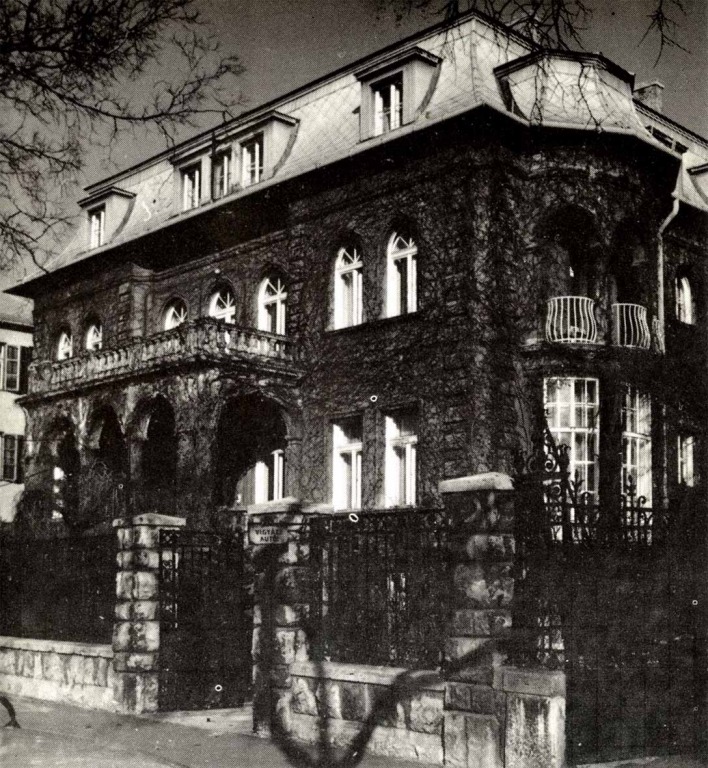
First building: Vorosilov/Népstadion/Stefánia út 97. Today, the Embassy of Iran
The building of the archive on Stefánia Road in a 1990 film newsreel from the Hungarian National Film Archive (Hungarian Film Newsreel 1990/33.) The building of the archive is shown towards the end of a news report on Stefánia Road.
Financing – The institute’s revenue to cover everything from the salaries of employees to the expenses incurred in constructing the new building was generated by the Film Museum (formerly Ady cinema) on Tanács Boulevard and from film rentals to film clubs. As an FIAF member, films kept in the archive but not licensed for public distribution could be screened by the institute in the Film Museum, which thus became known as the ‘cinema of old films’.
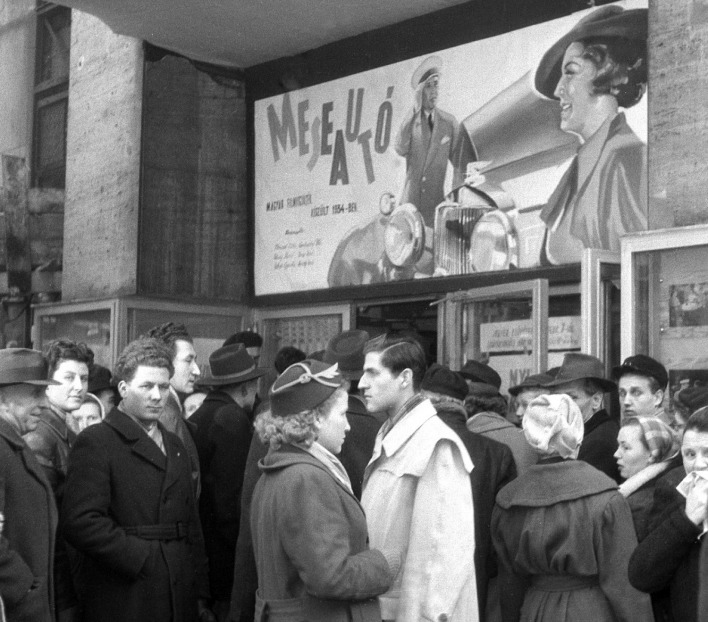
9 February 1957 Crowd in front of the Film Museum for the premiere of Meseautó (Car of Dreams) (MTI Fotó: Tamás Fényes)
The Film Museum opened with the restored version of Car of Dreams, which remained on the programme for months. In the first year, 1882 screenings were given in the 569-seat hall for an audience of 916,000. During the 1960s and 70s, the best of modern film art was shown here, with people queueing to see films by Buñuel, Truffaut, Chabrol, Pasolini, and Kazan. Season ticket performances of pre-war films were also extremely popular. Until 1989, the Film Museum had a registered audience of 20 million.
Füles cover...

...and a cartoon by Tibor Kaján showing the long queue in front of the Film Museum
Activity – collection of the film stock from all the different premises began. Later on, the stock was expanded with exchanges and purchases from other archives and private individuals. Stocktaking, stocking, processing, and the collection of film-related photos, posters and books started.

Expanding the collection by advertising
1962 – New film storeroom built on Budakeszi Road: films stored in five different locations go to a new storeroom on Budakeszi Road, on the premises of the recently constructed Hungarian Film Laboratory Company.

Hungarian Film Science Institute in 1963. The film archive of the Hungarian Film Science Institute was located next to the film laboratory at Budakeszi út 51. Until then, the storerooms of the institute were located in different districts of the city and the film factory was in Pasarét. In 1962, the modern film archive was inaugurated, in which films were kept in heat- and moisture-controlled vaults. Today, the nitrate film storeroom is in this building. (MTI Fotó: Sándor Mező, 1963)
20 May 1961 Filmkultúra launches – The periodical started as a lithographic publication, then from 1965 it was redesigned and the content updated. Editor in chief Yvette Bíró positioned the magazine with a scientific and popular profile; it was published every second month in 7000 copies. It was primarily aimed at the profession, film artists and Hungarian film experts (theory and practice). It analysed (together with essays from distinguished figures of the social sciences) the situation, endeavours and trends of domestic and international film culture. Its ‘Ellenvélemény’ (Counter-opinion) column frequently acted as a forum for views that ran counter to official standpoints. Yvett Bíró was removed in 1972 and forced to emigrate; the post of editor in chief was taken over by Erzsébet Garai.

First, blue, edition of the golden age of Filmkultúra
Printed editions of Filmkultúra (1960-1995) (pdf)
1970 Planning of today’s main building at Budakeszi út 51/E starts (architect: Mária Siklós).
The film archive in old film newsreels and the new, Budakeszi Road building in an amateur recording
November 1977 – Budakeszi Road building inaugurated with a modern, air-conditioned 400-sqm storeroom and shelving system on rails. Four storerooms were created in the northern wing of the building located on the premises of the Film Laboratory, and this is where the original, highly flammable nitrate prints are stored under strict conditions to this day.
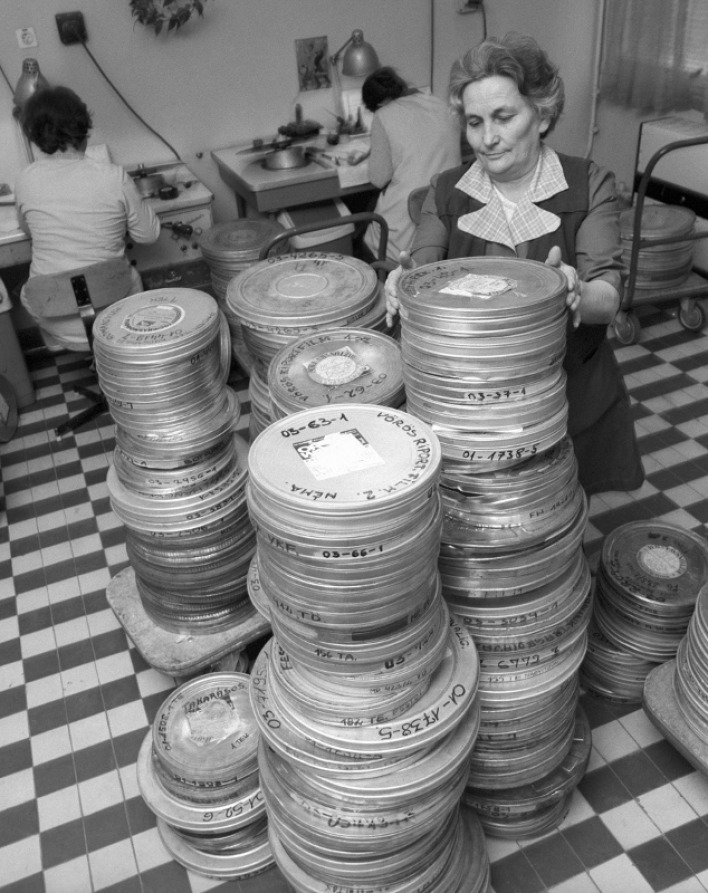
Several hundred film reels piled up in the handling facility of the new Film Archive on Budakeszi Road. 30,000 films are stored in the new building – now under the most modern conditions. Around 500 film clubs and societies can take out interesting yet all-but-forgotten film material on loan. (MTI Fotó: Péter E. Várkonyi, 1977)

The main building on Budakeszi Road (inaugurated in 1976) in 2017
During the 1960s and 70s, the foundations of wide-ranging activities were laid in every field. In addition to archiving, important roles were assigned to scientific research and book publishing (in Filmművészeti Könyvtár /Film Art Library/, 70 volumes saw the light of day; filmography research was published in the bulky volumes of Magyar Filmográfia /Hungarian Filmography/). Film distribution was handled in the Film Museum and through a network of film clubs (in the 1970s, there were 342 film clubs nationwide). Film clubs were supplied with films from a catalogue comprising 500 works. During all these years, the operation was completely self-financing.

Press conference with Cuban film director Santiago Alvarez in the Institute of Film Science (Stefánia Road), 1983 (MTI Fotó: Endre Friedmann)
1980 Film Annual – publication of the annual review of domestic film production and distribution, Film Annual, “the chronicle of a year of Hungarian films” (published until 2010).
1984 – István Nemeskürty appointed director. At the time, the successful studio director and recognized figure in the film profession was 60.
“The truth is, I wanted to go into retirement as a studio director. Just three months after my predecessor in this post retired, my professional superiors convinced me to take on this new job. They had to put up with a lot of resistance. So why did I accept? Because, without modesty, I think that I am made for the job. I am the only doctor of the academy whose dissertation was on film aesthetics. Then again, I have a huge amount of practical experience. And by the way, I am the oldest film critic. (…) But to my greatest astonishment, to which I have still not totally recovered even today, I find that this multifaceted institute receives not a penny from the public purse or the supervisory ministry. It is self-maintained. To be quite frank, I have to say that if I cannot end this unsustainable situation, then my work at this institute becomes meaningless.” (István Nemeskürty)
1985 Film postgraduate training courses for Hungarian secondary school teachers start (they continue until 2011). Vera Gyürey joins the institute to organize these classes (later she is appointed director).
1987 József Marx appointed director. Earlier he was head of Objektív Studio for many years, then deputy director general of Mafilm. Since the archive continues to be forced into largely self-financing itself, its begins to exploit the intellectual capacity at its disposal, going into video distribution as a partner of Intervideo.
1989 Magyar Film Múltja és Jövője Alapítvány (Past and Future of Hungarian Film Foundation) – Film restoration was conducted sporadically ever since the foundation of the Archive, initially not with a scientific approach but instead mechanically, mainly to meet the interests of distributors. The Archive presents the epoch-making film by Félix Máriássy, Csempészek (Smugglers, 1958) at the 1989 film review. The film was in an extremely poor state, virtually ready for discarding. The presentation demonstrates what could happen to the national film heritage if nothing is done urgently to preserve it. The results are immediate. The Archive, with wide professional support, establishes the Past and Future of Hungarian Film Foundation, in the framework of which, and with state funding, the systematic restoration of the damaged post-1945 film stock begins.

First restored in 1990 (photo: MNF)
Approximately 170 films from the period on nitrate film stock saved (István Szőts: Ének a búzamezőkről /Song of the Cornfields/, Géza Radványi: Valahol Európában /Somewhere in Europe/, Márton Keleti: Mágnás Miska /Mickey Magnate/, Károly Makk: Liliomfi, and Frigyes Bán: Rákóczi hadnagya /Rákóczi’s Lieutenant/). Restoration also extends to those films already made on safety source materials. Due to serious negative damage of the audio of Körhinta (Merry-Go-Round), which was the first feature to win international acknowledgement of Hungarian filmmaking, it had to be restored frame by frame, at a cost exceeding HUF 2 million at 1990s prices. Nearly 100 faded colour films made between 1957-84 were successfully restored with the collaboration of cinematographers, including Régi idők focija (Football of the Good Old Days) Tűzoltó utca 25 (25 Fireman’s Street), Még kér a nép (Red Psalm), Megáll az idő (Time Stands Still), Szindbád (Sindbad), Angi Vera, Isten hozta, őrnagy úr (The Tót Family), A tanú (The Witness). We also renewed short and experimental films such as sought-after early films from the Balázs Béla Studio (Sándor Sára: Cigányok, István Szabó: Te, Zoltán Huszárik: Elégia, experimental films by István Gaál, Miklós Erdély and Gábor Bódy, Szabó, Jancsó, Szőts, shorts by Dóra Maurer, Büntetőexpedíció and Félix Bodrossy plastic films).
1989 Film Museum closes – The last big box office hit in the Film Museum was at the beginning of the 1980s with Gone with the Wind, previously not distributed in Hungary. Distribution conditions and filmgoing habits change fundamentally around the time of the fall of socialism. The Film Museum is unable to fill the unique role it had earlier: its main theatre falls vacant and becomes damp. As a result, the Archive simply cannot keep it running.
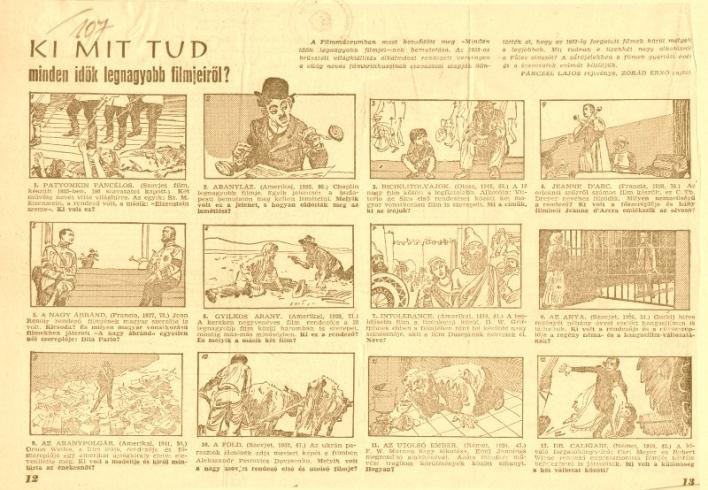
The Film Museum brought the ‘Brussels Twelve’ to Budapest
1990 Vera Gyürey appointed director – in her application, she stresses the role of the institute as a public collection. She sets as her goal the preservation of Hungarian and universal values, the constant monitoring of technical state, restoration, allowing access to research (and ensuring continuous, library-like usage) of stored material. The stock has to be expanded through exchanges and acquisitions. Her ideal is a service provider institute: expansion of film culture through a club network, screening of purchased films in the Örökmozgó. Film history and scientific activities contribute to this. Filmkultúra, book publishing continue, the library remains open and postgraduate training for secondary school teachers continues.
Opening of Örökmozgó (amateur recording): Gábor Kövesdy, Vera Gyürey, György Horváth
The history of the Örökmozgó Film Museum began in 1912, when the fashion trading house on the corner of Erzsébet Boulevard and Dob Street was transformed into a film theatre and opened as the Royal Nagymozgó (Royal Grand Movie Theatre). Its founder and owner was one of the pioneers of Hungarian cinematography, József Radó. From 1922, it changed name to Vesta Mozgó (Vesta Movie Theatre), then in 1942 became the Erzsébet Cinema. From 1945, it took its old name again, Vesta, then in October 1951 switched to Pentele. In late 1954 there was another change, to Mátra Cinema, then after a restructuring, in late 1975 it became the Mátra Mese és Ifjúsági Mozi (Mátra Fairy Tale and Youth Cinema). The renovated Örökmozgó Film Museum opened on the site of the old cinema on 3 October 1991.
3 October 1991. Örökmozgó Film Museum opens with completely renovated auditorium, interpretation equipment, café, bookshop and a special range of films from the Archive. The 124-seat cinema welcomes film fans with three constantly changing screenings a day, and a programme announced a month in advance. It organized film weeks and themed series in order to present the core works and rarities in the Film Archive. But it has also attracted some of the most exciting works and creators of contemporary film to Hungary with its one-off screenings. Greats of the film world such as Volker Schlöndorff, Margarethe von Trotta, Michael Haneke, Hanna Schygulla, Lucien Pintilie, Dušan Makavejev, Vera Chytilová, Claude Lanzmann and Jirí Menzel have come here and shown their films. During the 1990s, Örökmozgó functioned almost like a non-stop film festival, which was made possible by the tendering system, the close cooperation and support of institutions of culture and embassies, as well as the excellent system of contacts worldwide. Our programme editors devoted particular emphasis to minority topics and film’s approach to our disputed issues of history. Furthermore, where possible the films were screened in the original language (with subtitles, optional simultaneous interpretation), and in the original format (generally 35mm print). Film weeks often attracted full houses – at that time there was no YouTube and no downloads: anyone who wanted to view a rarity browsed through the Örökmozgó programme, made easier with a monthly detailed programme guide. Annually from 1995, restored films as well as international results and methods achieved in the field of restoration were presented during the Cinémémoire/Filmemlékezet Festival.

Mátra Cinema in 1956 (photo: Fortepan)
Name variations:
1912 Royal Nagymozgó (Royal Grand Movie Theatre)
1922 Vesta Mozgó (Vesta Movie Theatre)
1942 Erzsébet Mozi (Erzsébet Cinema)
1945 Vesta
1951 Pentele
1954 Mátra Mozi (Mátra Cinema)
1975 Mátra Mese és Ifjúsági Mozi (Mátra Fairy Tale and Youth Cinema)
1991-2015 Örökmozgó Filmmúzeum (Örökmozgó Film Museum)
More about Örökmozgó
1992 Hungarian Film Institute becomes a public collection – The Institute, up to this point self-financing, is awarded annual funding from the budget. The supporting ministry covers 40-45% of the budget, including the pay roll and upkeep of the buildings. The larger part of the expenses is covered from tenders and revenue-generating services. The director is appointed and dismissed by the minister of culture, with professional oversight from the Library Department of the ministry. Pursuant to Article 88. (1) of Act XXXVIII of 1992 on Public Finances, its founder is the minister of national cultural heritage. The Ministry of National Cultural Heritage is the maintainer and supervisory body. Its core activity to be conducted as a state task and the objective of the operation of the archive is to contribute to the development of Hungarian film culture through the collection, preservation, restoration and archiving of material, written and other documents of Hungarian and universal film culture, as well as research activities.

Körhinta (Merry-Go-Round)
1992 Restoration of Merry-Go-Round – The largest restoration project of the Past and Future of Hungarian Film Foundation, carried out with traditional technology. Due to constant copying, the picture negative of this 1956 classic by Fábri Zoltán was damaged to such an extent that in many places it was possible to repair only by going frame by frame, with manual retouching. The extremely meticulous and time-consuming work meant that the cost eventually rose to an unprecedented HUF 2 million in 1992.
1 September 1994. New premises open on Budakeszi Road – the ‘blue block’. The scattered locations of the institute’s units and storerooms nearing maximum capacity caused increasing problems. There was no opportunity to build a film storeroom in the villa on Stefánia Road, and the library ran out of space to hold the ever-increasing stock. Thus the building on Stefánia Road was exchanged for the building in the premises of the Hungarian Film Laboratory on Budakeszi Road, which was renovated and restructured to add offices, a library and air-conditioned storerooms. Unfortunately, the two buildings are not located adjacent to each other and since a residential park has been built between the two plots, any possible expansion is unrealistic.

Library in the ‘blue block’
1995 Cinema at 100 – Film, technical and cinema history exhibition organized by the Archive in the Ludwig Museum. A catalogue and graphics album on the exhibition are also published. Commissioned by the Archive, András Jeles shoots a film, Kötéltánc, for the centenary event staged in Uránia Cinema.
1995 The Archive receives a significant grant from the Lumière Foundation established on the 100th anniversary of the birth of film. Funds are for the restoration of several silent movies. Thanks to long-term research and planned international cooperation, the stock of severely depleted Hungarian silent films has been significantly augmented over the past 20 years. At one time, the collection had a mere 12 silent feature films, whereas by 2009 the silent stock had risen to 50 complete and 36 part films. The majority of new acquisitions came from foreign archives during the 1990s. The Archive regularly appeared with its films at festivals organized in Pordenone and Bologna. In 2001, restoration of the Sándor Korda silent movie Az aranyember (1918) won the Haghefilm prize worth €10,000. From this sum, Haghefilm restored Jenő Janovics’s silent movie made in 1917, Az utolsó éjszaka (The Last Night).
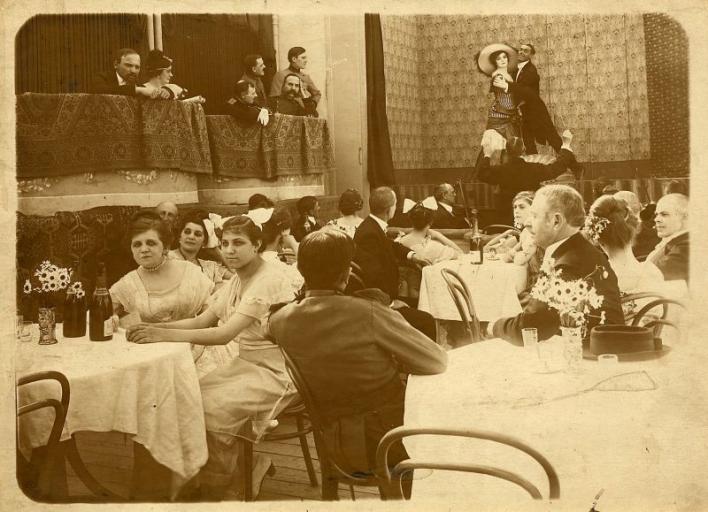
Az utolsó éjszaka (The Last Night, Jenő Janovics, 1917)
1995 The printed version of Filmkultúra is terminated, since when it has been available online
1996 First MozgóKépTár appears – it was the first CD-ROM in Europe to use parts of moving images as film history illustrative material. By 2008, a further five discs were produced. The sixth CD-ROM tracing the path taken by Hungarian animation was finished but never published. The series (in Hungarian and English) provided a comprehensive picture of certain periods and genres in Hungarian filmmaking. In addition to filmography data, each disc had an hour’s worth of analysed moving images, contemporary articles, analytical studies, bibliographies, list of events, film songs, several hundred photos, biographies and studies on the given period. The series is used around the world for educational-illustrative purposes. During the making of the CD-ROMs, an integrated system comprising 16 databases was built between 1996-2013.
Online version here

MozgóKépTár 1. Feature films until 1944 (1996)
MozgóKépTár 2. Documentary films until 1920 (2004)
MozgóKépTár 3. Feature films 1945-1962 (2002)
MozgóKépTár 4. Documentary films 1920-1944 (2009)
MozgóKépTár 5. Feature films from 1963 to the present day (1999)
MozgóKépTár 6. Documentary films from 1945 to the present day (2008)
1997 onwards International festival initially titled Cinémémoire, then Filmemlékezet, launches and runs annually until 2011. It covers topics of film restoration, preservation and distribution, with presentations by representatives of fellow archives and institutes, and attended by leading experts in the field from Hungary and abroad. Each evening, the programme includes an Örökmozgó film screening where the general public can watch film rarities brought to Budapest by speakers.
Book publishing in the 1990s and 2000s – Specialized works examining particular periods of film history: Gábor Szilágyi: Tűzkeresztség (1992), Életjel (1994); Zsolt Kőháti: Tovamozduló ember tovamozduló világban (1996); Balogh Gyöngyi - Király Jenő: “Csak egy nap a világ” – A magyar film műfaj és stílustörténete 1929-36 (2000); Tibor Sándor: Őrségváltás (1992), Őrségváltás után (1997), Magyar rendezők könyve (1999), Magyar filmográfia: Játékfilmek 1931-1998 (1999), Magyar Filmlexikon 1-2. (2005), A magyar filmtörténet képeskönyve (2007, jointly with Ozirisz Publisher). Core works on film history and aesthetics published in Hungarian translation: Siegfried Kracauer: Caligaritól Hitlerig (From Caligari to Hitler, 1993); David Bordwell: Elbeszélés a játékfilmben (Narration in the Fiction Film, 1996), François Truffaut – Alfred Hitchcock (1996).
1999 Hungary guest of honour at the Frankfurt Book Fair: the related film programme in the Deutsches Film Museum and the exhibition in the Frankfurt Film Museum are put together by staff of the Archive.
2001 Strasbourg Convention – preliminary principles of digitization – The International Federation of Film Archives (FIAF) has coordinated and regulated the work of film restoration and database development since the early 1990s. Particular emphasis was given to ensuring accessibility of material i.e. the open archive concept. The 2001 Convention for the Protection of the Audiovisual Heritage (Council of Europe) calls on member states to cooperate in the application of digital technology, making the film heritage accessible, particularly access to works of art created from state funds.
2002 Exhibition entitled Hungarian Mind, Hungarian Success in the Millenáris, in which the Archive participates with a large quantity of visual material totalling approximately 60 hours. 2002 Digital techniques applied in film restoration – The faded colours of colour inserts in a 10-minute roll were successfully restored in Géza Radványi’s classic A beszélő köntös (The Talking Robe, 1941).

A beszélő köntös (forrás: MNFA)
14 March 2003 A comprehensive István Szabó exhibition opens in Potsdam with the title Central European Fates.
2004 Digital restoration of the first Hungarian colour film, Ludas Matyi (Mattie the Goose-Boy), and the first colour film newsreel made on 1 May 1949 became available through a Ministry of National Cultural Heritage (NKÖM) grant of HUF 30 million. This major professional undertaking was achieved with the collaboration of several companies and research groups (the Film Archive, Hungarian Filmlab, Sztaki and the University of Veszprém). In the same year, the Ministry of Informatics and Telecommunications funded the digitization of 100 Hungarian feature films and 590 weekly newsreels with a grant of HUF 70 million.
2004 Website of the Film Archive launches
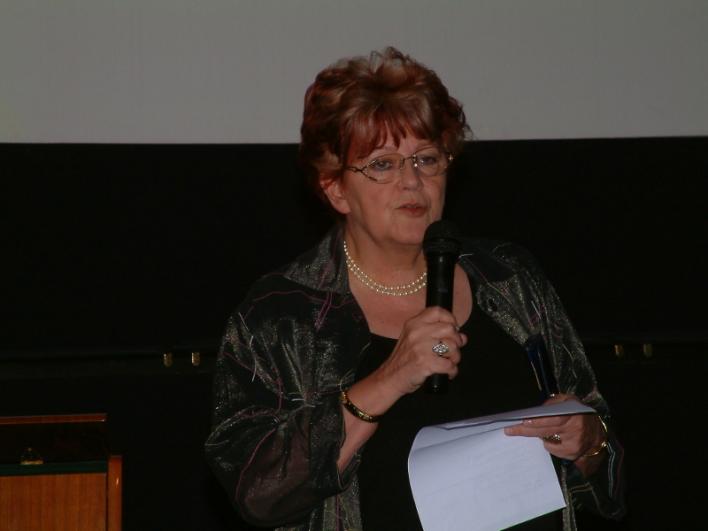
Director Vera Gyürey at the 5th Film Restoration Conference (2005)
December 2004 – Adoption of the Film Act – the long-awaited Film Act defines the tasks of the Hungarian National Film Archive as an independent, budget-funded public collection. The Film Archives owns handling rights to the national film assets, it receives legal deposits, but its stock cannot be alienated, transferred or encumbered. The executive order on the Film Act is only passed in 2006.
2006 The first 100 digitized Hungarian feature films are available at Nemzeti Audiovizuális Archívum (National Audiovisual Archive, NAVA) points (in city, county libraries, universities, secondary schools). The first 590 film newsreels are also made available at Filmhíradók Online.
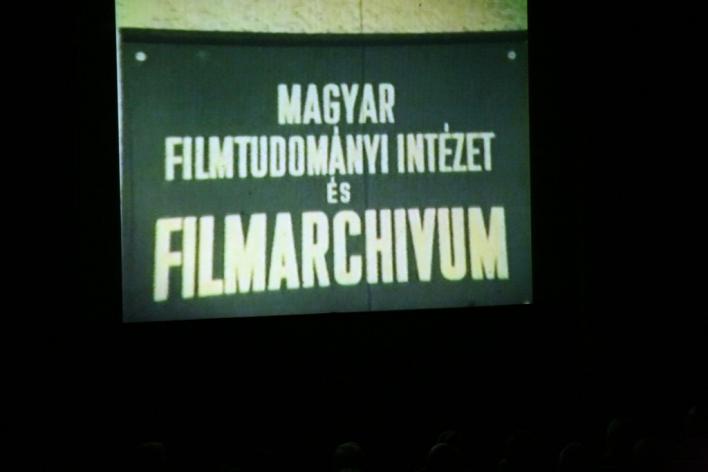
Pictures taken at the celebration marking the 50th anniversary of the Film Archive (2007, photo: Zoltán Kerekes)
January 2008 Exhibition entitled 100 Years of Hungarian Film in Kogart House, which presents the history of Hungarian filmmaking from the beginning of silent films to the present day.
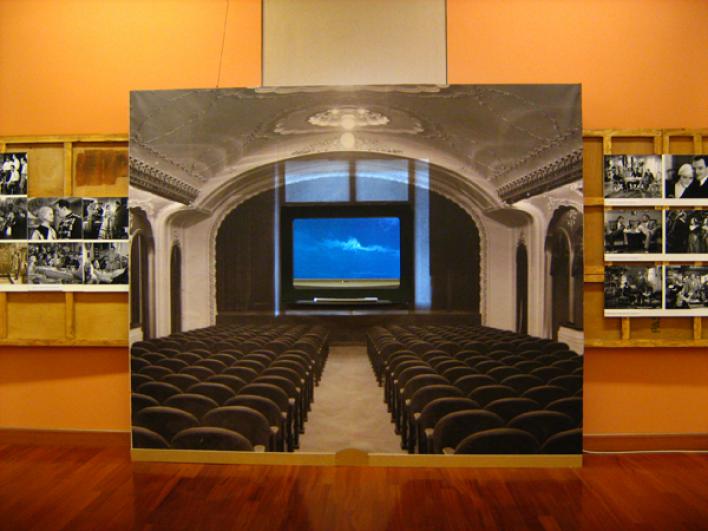
100 Years of Hungarian Film exhibition
November 2008 – Presentation of the digitally restored film Hyppolit, a lakáj (Hyppolit, the Butler) – The nitrate visual and audio negatives of the 1931 evergreen comedy survived in the collection of the Archive, although faults could not be repaired with traditional laboratory methods due to shrinkage of the film stock. The only solution: digital visual and audio restoration at a cost of HUF 15 million, covered by the Hungarian Development Bank.
2010 The first in the film history DVD series of the Archive is published; digitally restored Mattie the Goose-Boy (1949), which is followed by more than 100 DVDs until the end of 2016. The selection includes films essential from a film history aspect, digitally restored, with English subtitles, film history extras and short films.
June 2011 – December 2016 The Film Archive functions as a part of the Hungarian National Digital Archive and Film Institute (MaNDA):
Website – mandarchiv.hu (2012-2016)
Database – Hungarian National Digital Archive
Exhibition – National Film History Theme Park (Ózd)
1 January 2017 The archive continues to operate as the Hungarian National Film Archive, as a directorate of the Hungarian National Film Fund. The Film Archive and its collection, that is, Hungary’s film heritage, received a new opportunity in that for the first time in its history it was placed under the direction of a professional institute for film. The comprehensive operational and technological modernization of Hungary’s only, and Central Europe’s largest film collection gets underway.

György Ráduly is appointed director of the Film Archive on 1 January 2017
1 January 2020 The Film Archive continues to operate as part of the National Film Institute, established as the legal successor to the Film Fund, under the new name National Film Institute – Film Archive.
ACHIEVEMENTS from 2017
Film restoration
2017 The National Film Digitization and Film Restoration Programme, the long- term programme to digitally restore the national film heritage, is launched. For this purpose, the government of Hungary provides the Film Archive with annual funding built into the operational expenditures. Within the framework of the programme and through the coordinated work of the Film Archive and Filmlabor, between 25-30 Hungarian feature films are restored annually under the professional guidance of the Film Archive, in collaboration with the Hungarian Society of Cinematographers (HSC) and the involvement of artists and technicians. Since 2017, funding from the Hungarian Academy of Arts has also contributed to the digital restoration of several films.
Under the programme, by late 2019 88 feature films had been restored, which is a noteworthy performance even in European terms. Restored films were shown at the most prestigious festivals in the world and we screened them for Hungarian audiences at the Budapest Classics Film Marathon as well as throughout the Carpathian Basin.
The Digitization Strategy for Public Collections (KDS) programme announced by the Ministry of Human Capacities opens the opportunity to enhance the film digitization and storage/preservation capacity of the Archive, thanks to which the state of digitization of the entire Film Archive stock, which in 2017 was just 10%, can radically increase by 2025, thus ensuring that Hungary’s film heritage can be moved out of film storerooms and made available to audiences.

In 2020, digital restoration of the print of the silent movie Munkászubbony (The Workman’s Overall, 1914) continues.
Film distribution in Hungary
Annually, classic Hungarian films are presented at over 600 screenings open to the public attracting 60,000 viewers. In addition, we have supplied more than 200 Hungarian feature films to TV stations based in Hungary and beyond the borders, with a total annual audience of 25 million. Every year since 2017 we have been present at the Valley of Arts in Kapolcs, where we supply festival-goers with films, children’s programmes and open-air screenings in the Mansion on Fő Square for 10 days.
DVDs
In 2017, we relaunched the Film Archive film history DVD series with a new design, content and concept. Alongside individual discs, we published recently restored oeuvres and selections in quality, box set and gift box versions. Everything in the series is digitally restored, with English subtitles, accessibilized and including extras. In 2017, the DVD edition started again with gift box editions of the works of Zoltán Fábri on the centenary of his birth and Attila Dargay on the 90 th anniversary of his birth. By 2020, 38 DVD editions edited by staff of the Film Archive had been published, of which five are exclusive gift box sets.
DVD product photos (gallery)
Freely available online content
Through our video sharing channels we make digitized works from our collection available in connection with holidays and anniversaries:
Christmas 2017: 60 film gifts from the Film Archive at 60: 380,000 views
Christmas 2018: 100 film gifts: 420,000 views
Christmas 2019: 66 film gifts: 800,000 views
2020 During the period of restrictive measures introduced due to coronavirus we made every effort to assist the lives of those forced to stay at home in isolation with free online content:
21 March – 15 June By releasing 90 Online Film Classics we contributed to digital education and quality entertainment. More than 2.5 million people viewed the 90 literary adaptations, historical, youth, cartoon, fairy tale and documentary films between March and June.
30 April – 10 May We made 20 unforgettable Hungarian comedies available online for free on the occasion of Hungarian Film Day.
Budapest Classics Film Marathon (BCFM)
2-5 November 2017 1st BCFM – The Film Archive celebrating its 60th anniversary organized the Budapest Classics Film Marathon, the capital’s international festival of archive film, for the first time. Over the course of the weekend there were multiple screenings of Hungarian films restored by the Film Archive and Filmlabor as well as masterpieces restored by other European archives. The opening film was Zoltán Fábri’s Körhinta (Merry-Go-Round); we showed a further four works by Fábri on the occasion of the 100th anniversary of the birth of the director. Audiences had the opportunity to see masterpieces of Hungarian film history at 40 screenings in eight themed blocks in Uránia Film Theatre, the French Institute and Corvin cinema. The programmes attracted nearly 5000 people. During the professional day, the preservation and restoration strategies of Hungarian and other European film archives were outlined.
4-9 September 2018 2nd BCFM – The Budapest Classics Film Marathon was extended to six days and audiences could not only watch films but get to meet stars: Claudia Cardinale, Klaus Maria Brandauer, Jean-Marc Barr and Katinka Faragó introduced their films. Screening of Az aranyember shot by Mihály Kertész 100 years earlier proved to be a moment of celebration. Over the course of the programme we showed 50 restored Hungarian films and 20 foreign films with Hungarian links. A free, open-air location boasting a 21-m-wide screen, the biggest in the country, was added to the festival venues. Each evening there were full houses on Szent István Square, Uránia National Film Theatre and Toldi cinema, close to 15,000 joined the various programmes, part of which were arranged in the cities of Eger and Győr.
Finest moments of the 2019 Marathon
2019 3rd BCFM – We showed more than 100 film classics, among them 21 recently restored, full length Hungarian works, with the leading topic being the connection between music and film. Screenings in Budapest’s Szent István Square in the presence of star guests proved massively popular. Each evening, the square in front of the Basilica was packed with audiences captivated by the magical cinematic experience. Despite a massive downpour, many hundreds watched Queen’s concert film shot in Budapest in 1986. Film classics were on the programme in Uránia National Film Theatre, Toldi cinema and the French Institute in Budapest, plus a new venue, Puskin cinema. Movie fans had the chance to meet in person with world- famous French film star Pierre Richard, Udo Kier, Magda Vášáryová and Johanna ter Steege. Numerous top Hungarian artists and technicians also took part in the screenings, sharing their memories of the films with audiences. Over the eight days of the festival 15,000 viewers watched films in Budapest, Eger and Győr.
2020 In just three years, the rapidly expanding Budapest Classics Film Marathon had become such an important event that in 2020 it featured on the cover of the magazine of the International Federation of Film Archives (FIAF), showing 2000 people watching – despite heavy rain – the Queen concert film shot in Hungary.
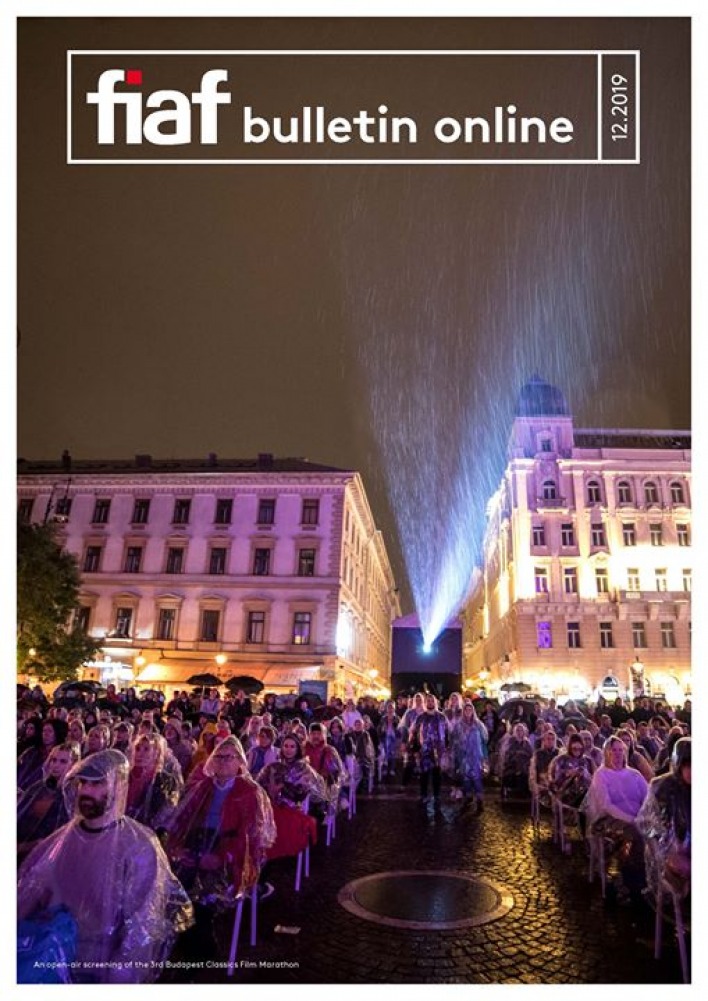
Videos produced in-house
In 2019, we started making a comprehensive film history series together with film historians of the Film Archive. The Who Are You? series is designed to inform a broad audience about iconic actors and actresses, film directors, producers and other specialists of Hungarian filmmaking. Interview excerpts are inserted into recordings with narration; young cinematographers ensure a high standard product. The SPARKS camera and lighting technology Kft. company founded by Vilmos Zsigmond assists in making the recordings.
2018 100-year-old Hungarian newsreels series
The newsreel series covering the events of 1918-19 is the first block in the history of Hungarian newsreels of which nearly all of an entire year has survived intact. Our short film series 100-year-old Hungarian newsreels aired in 38 episodes starting in late August 2018 and going through to November 2019, showing what happened in the given week precisely a century earlier. The narrated series based on the latest historical research was a great success. The most popular episode (seen by 250,000) was from late January in which recently discovered and never previously broadcast footage of the funeral of Endre Ady was shown.
Educational programmes
2018 Core Films – The Film Archive’s website on the history of film
The Film Archive's online film history guide draws attention to the most interesting pieces of Hungarian film history. The selection of some 450 films includes full length feature and documentary films, short films and animations. Films that have been included are part of general education and culture because they are interesting, important and special in some way. Entries position works in the overall history of film and in the careers of artists with a view to contemporary and international contexts. Content can be searched by genre, director or subject. There is also a film history timeline and glossary.
2018 Film Finder – Online platform of the Film Archive database
Currently, details related to full length Hungarian feature films are available (2217 Hungarian feature films, cast and crew); uploading of data on other film types (short-, documentary- and animation films) is ongoing. A photo gallery, film excerpts and trivia are linked to film datasheets; biographies and a gallery are linked to cast and crew datasheets.
2020 Klassz programme – Film Archive’s educational programme
Within our Klassz programme structured on the Core Films, we supply ideas and additional material about how to use films in education and teaching. The programme has a constantly increasing number of subject-related teaching documents, presentation class plans, quizzes, top lists, games, online and offline worksheets.
International film distribution
We regularly appear on the archive programmes of the top film festivals with our fully restored film classics.
2019 Restored Hungarian films were showcased on the programmes of all A-category film festivals having a classics section.
Main festival appearances:
2017
Cannes International Film Festival: Körhinta (Merry-Go-Round)
Lumière Grand Lyon Film Festival: Körhinta (Merry-Go-Round)
2018
Berlin International Film Festival: Az én XX. századom (My 20 th Century)
Lumière Grand Lyon Film Festival: Hannibál tanár úr (Professor Hannibal)
2019
Berlin International Film Festival: Örökbefogadás (Adoption)
Cannes International Film Festival: A tanú (The Witness)
Annecy International Animation Film Festival: Macskafogó (Cat City), János Vitéz
(Johnny Corncob)
Venice International Film Festival: Sodrásban (Current)
Lumière Grand Lyon Film Festival: Ők ketten (The Two of Them), Az ötödik pecsét (The
Fifth Seal)
2020
Cannes International Film Festival: Feldobott kő (Upthrown Stone)
Venice International Film Festival: Utószezon (Late Season)
Classic Hungarian films featured not only at festivals but also at cultural events organized by foreign representations, retrospective programmes and in cinemas.
Working in collaboration with foreign distributors, restored Hungarian movies are also screened in cinemas and on VoD, plus they are released on DVD and Blu-ray.
The Film Archive regularly participates at professional film fairs, thus we have a presence every year at the European Film Market in Berlin, the Cannes Film Market and MIFC in Lyon that specifically concentrates on classic films.
Hungarian films abroad (gallery)
FIAF activities
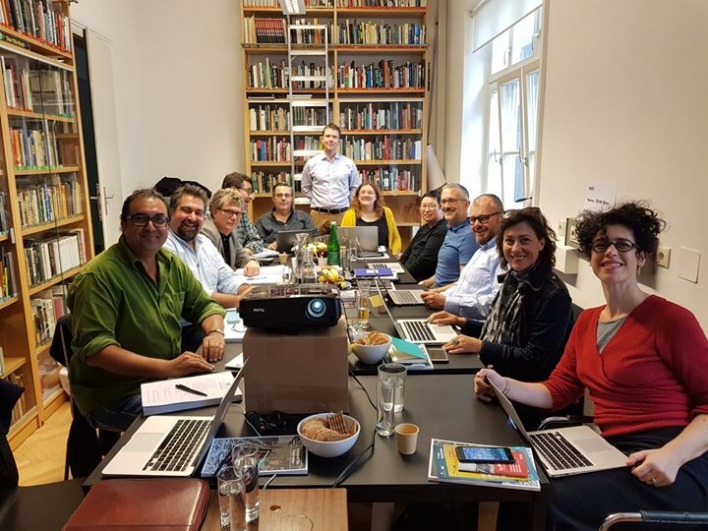
FIAF Executive Board (Vienna, November 2019)
2019 The election of György Ráduly, director of the National Film Institute – Film Archive, to the board of directors of the International Federation of Film Archives (FIAF) was a major diplomatic achievement.
On our initiative, the membership of the Lausanne congress of FIAF unanimously voted to hold the world congress of film archives in Budapest in 2022.
2020 Due to the COVID pandemic, the FIAF conference planned to be staged in Mexico was cancelled and the annual congress was held online.
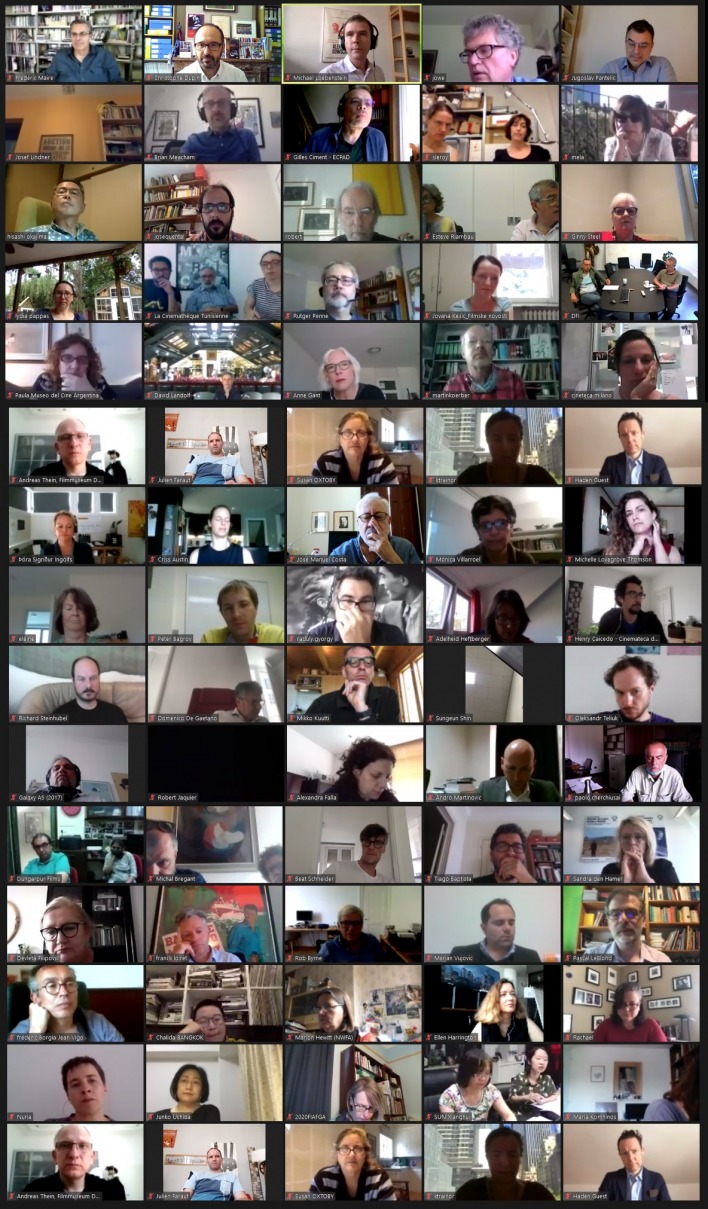
FIAF virtual conference, 2020
The Film Archive is not only a member of FIAF but also the Association of European Cinémathèques (ACE), the purpose of which is the preservation, presentation and promotion of the European film heritage.
The Hungarian archive is not only a participant but an initiator of the Season of Classic Films series organized by the Association of European Cinémathèques.
2018-2020 Renovation of the main building of the Film Archive
The renovation makes it possible for the institution to continue operating with modern storerooms, research labs and workstations. Renovation of the building is funded by the Ministry of National Development; technological development of the Film Archive is implemented from grants from the budget of the Ministry of Human Capacities’ Digitization Strategy for Public Collections.
Building renovation (gallery)
In stage one, a total floor area of 1035 sqm was renovated. In April 2019, the redeveloped sections of the central site of the Film Archive were inaugurated: reception, aula, workstations, rehabilitated bathroom facilities, the new meeting room, research labs and legal deposit copy office. In addition, new and state-of-the- art legal deposit copy storerooms with HVAC, humidity-controlled and ventilation systems have been opened with constant 15 °C / 40 % RH values, specifically designed for the long-term storage of magnetic tape.
Stage 2: May 2019 – December 2020
In May 2019, the second stage of the renovation of the main building of the Film Archive started: renewal of the entire research wing, upgrading of the storeroom climate control system to a modern HVAC system, and insulation of the film warehouse. Basement machinery was scrapped, to be replaced by digitizing capacity and a state-of-the-art server room for the operation of data storage devices to be procured from the budget of the Digitization Strategy for Public Collections. At the same time, film handling rooms were established on the ground floor, naturally taking work safety aspects into consideration. Furthermore, a soundproofed oral history room suitable for audio-visual recording has been created, which includes a control room. During the IT design phase, we devoted particular attention to setting up a LAN and optic network between workplaces. During the second stage of the renovation project, a 1247-sqm collection warehouse has been overhauled and upgraded.
Even during this extensive reconstruction, the work of the Film Archive has continued as normal, collections have been moved to provisional storage sites and members of staff carry out their tasks at temporary workstations.
From March to June 2020, home office introduced due to the coronavirus epidemic was arranged quickly and efficiently, therefore work continued without interruption in the Film Archive during 2020.

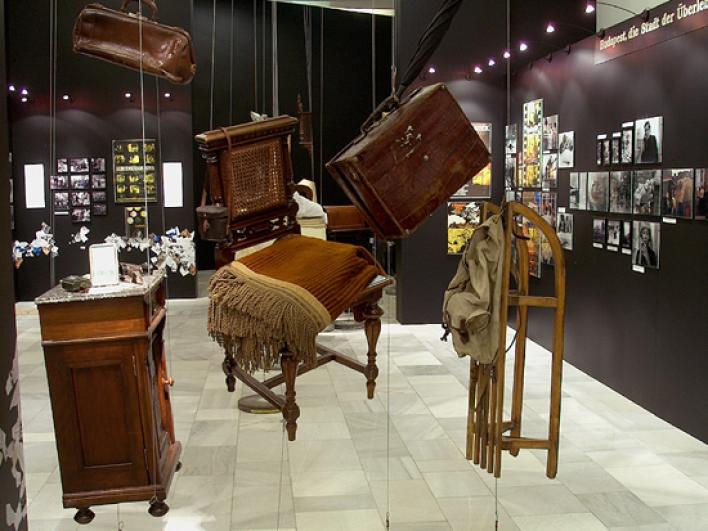


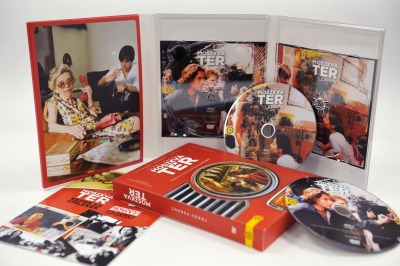
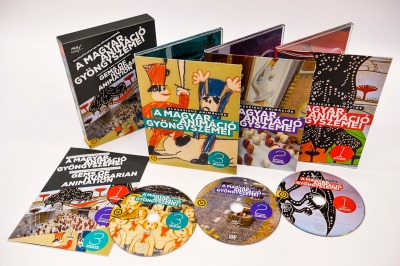

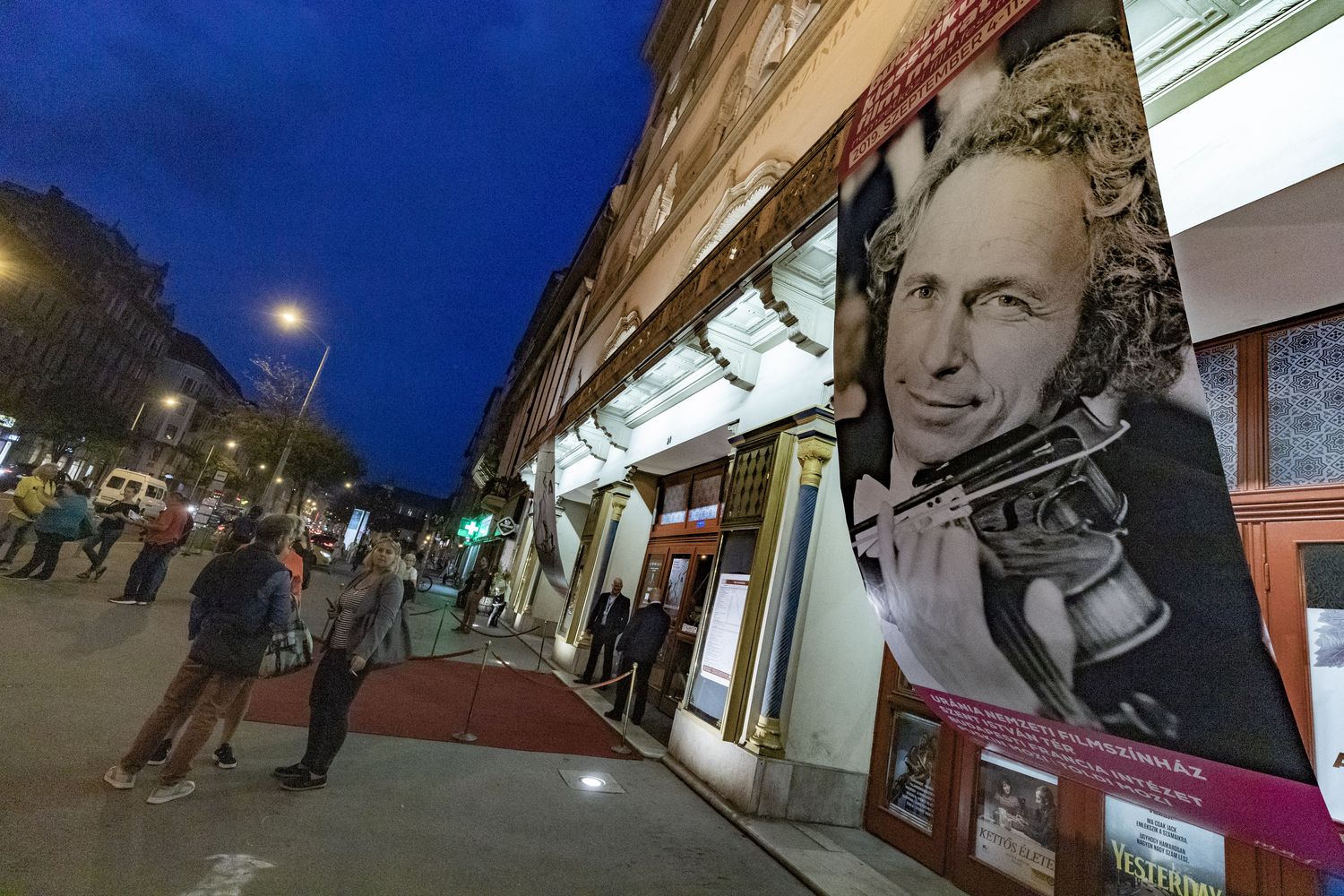
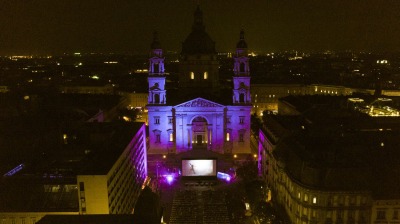


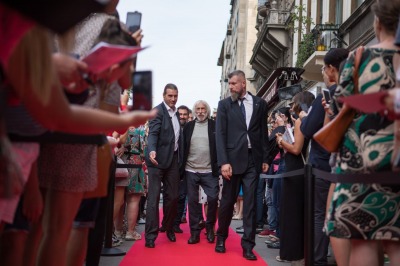
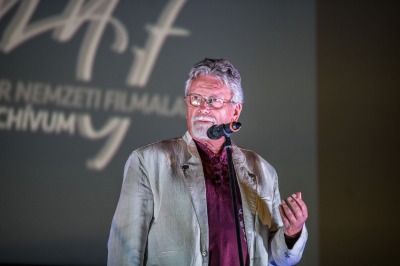


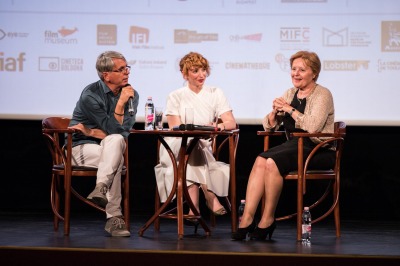
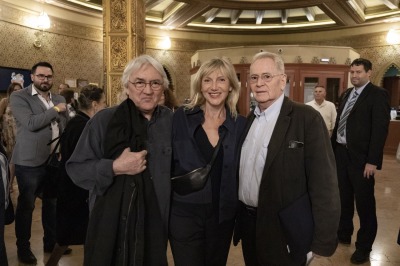
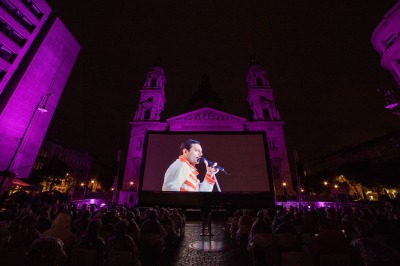
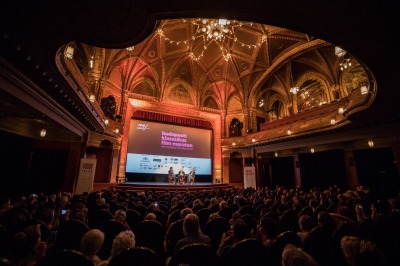


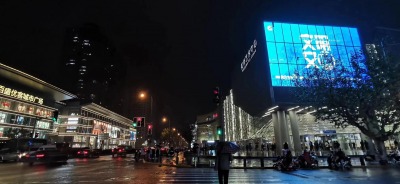
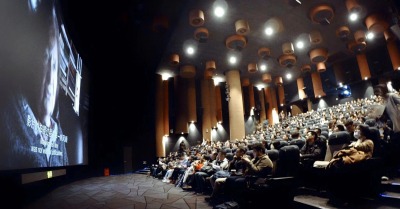
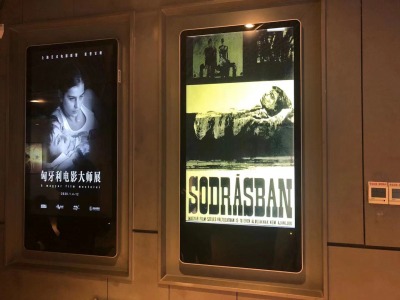
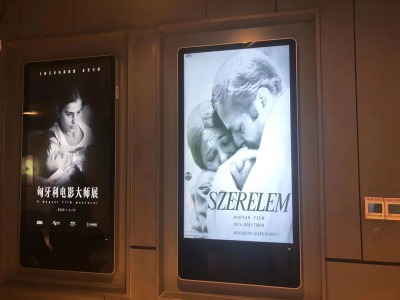

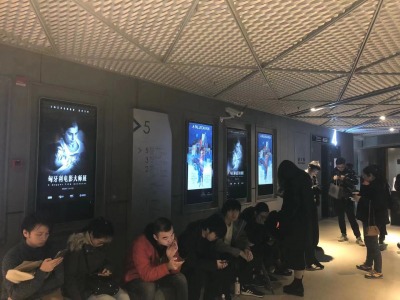
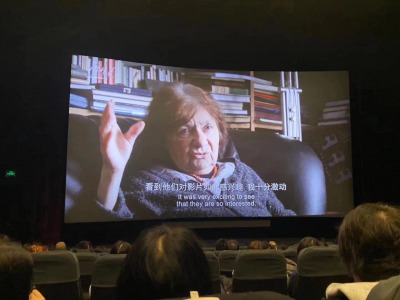
.jpg)
